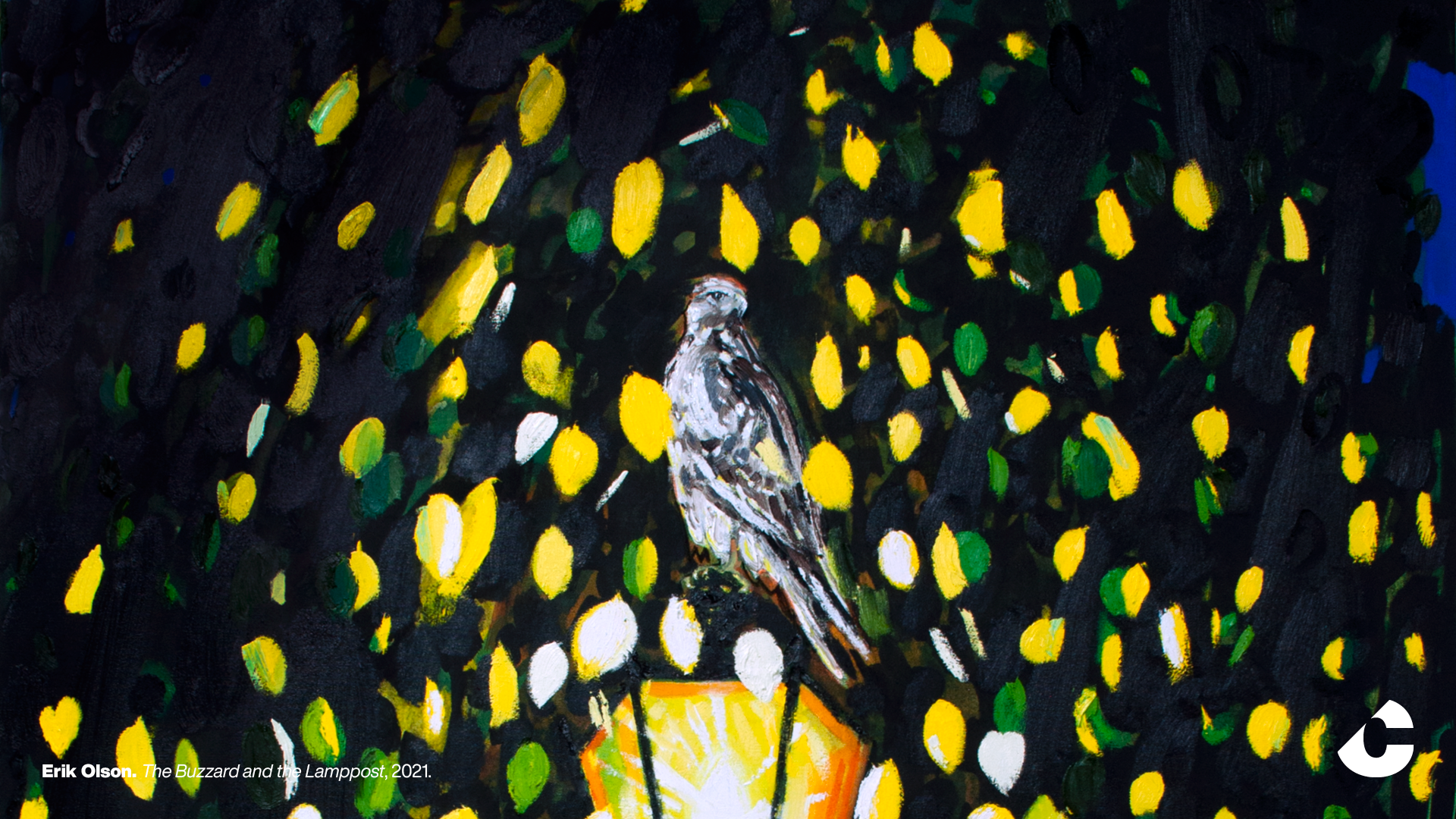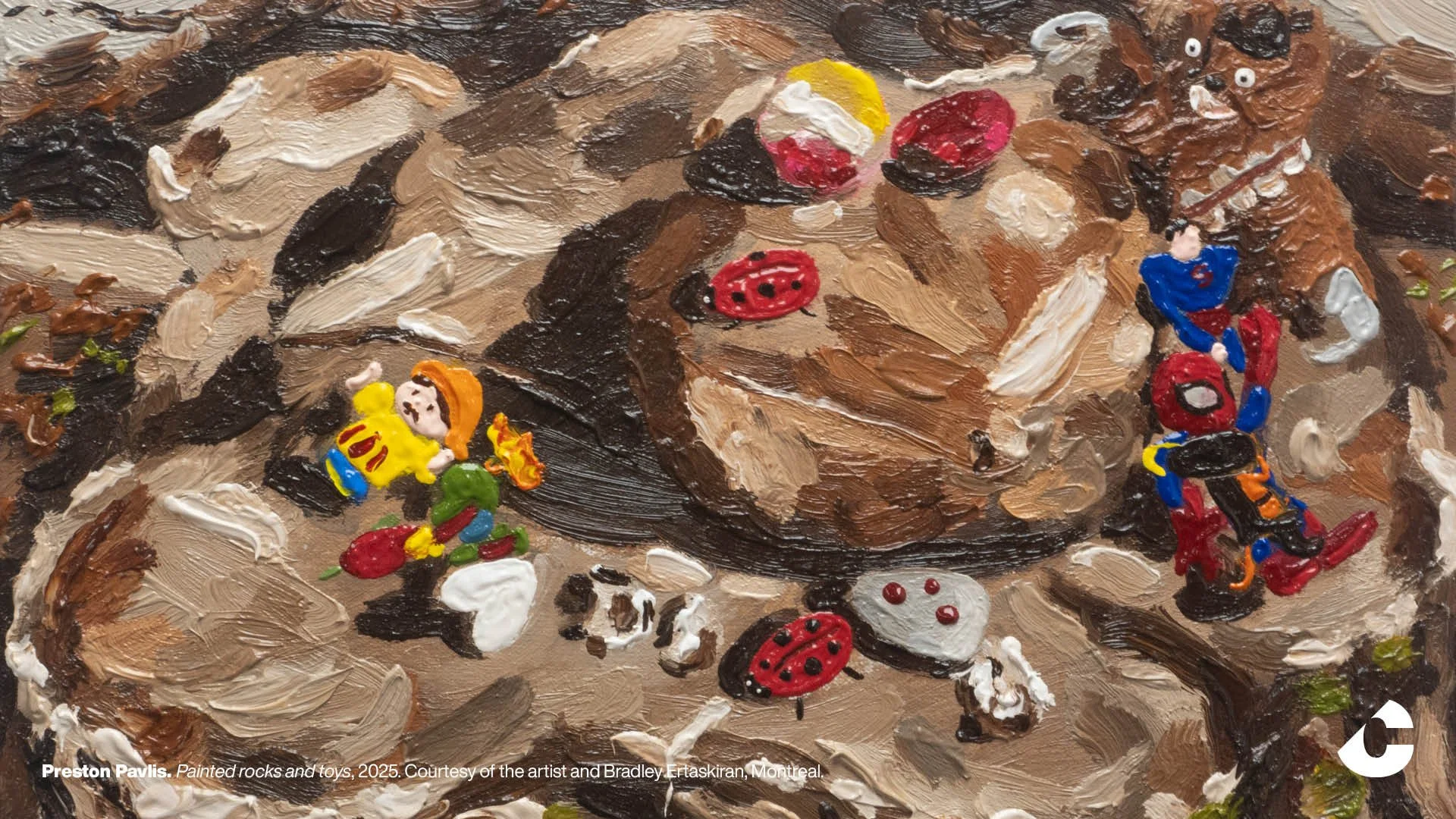Exhibition Opening
Erik Olson + Preston Pavlis
September 25
6:00-9:00 PM
Please join Contemporary Calgary on Thursday, September 25, from 6-9 PM, for the opening of two solo exhibitions, Erik Olson: In the Garden and Preston Pavlis: You there.
Doors
6:00 PMRemarks
6:45 PM | AtriumIn-Conversation with artists Erik Olson, Preston Pavlis and Senior Curator Kanika Anand
7-8 PM | Heather Edwards TheatreGalleries Close
9:00 PM
FREE to the public. No registration is required.
Seating for the In-Conversation with artists Erik Olson, Preston Pavlis and Senior Curator Kanika Anand is first-come, first-served.
Erik Olson
In the Garden
September 25, 2025—February 15, 2026
In the Garden is a series of large-scale oil paintings begun by Erik Olson in Düsseldorf, Germany during the early, uncertain months of the pandemic in 2020. The works draw on the historic Hofgarten—Germany’s oldest public park—as both a physical site and a psychological landscape. Thinking of the liminal space between order and freedom, Olson expanded the series this year to include imaginative, dreamlike explorations, removed from specificities of place.
Olson’s canvases teem with narrative potential: animals stalk, waters reflect, solitary figures lie in moments of reflection or doubt. These are pauses between the familiar and the unknown that conjure the garden as a threshold—at the city’s edge or just around the corner—a surreal space between anxiety and longing.
In more recent works, the garden becomes increasingly theatrical, a site for performance, memory, and projection. Olson positions the park as a communal mind-space: a place implicitly understood as a site of memory, reflection, and social change. It is a space where personal myth meets collective transformation, where the imagined and the observed intertwine.
Formally, Olson deploys the visual language of landscape—tree lines, paved paths, and open skies. However, these elements are more suggestive than descriptive, like fragments of memory or imagined scenes. Colour functions with intent: sharp contrasts, radiant hues, and atmospheric light evoke a world that feels vivid and surreal. Scale and perspective place the viewer on uncertain ground—never fully inside the scene, nor fully outside it. We stand on the brink of the garden’s illusion, where every path leads inward as well as outward.
Rather than offering escape, the works reflect back the complexities we bring into them. The garden becomes a site of reckoning—a space where internal landscapes are externalized and where desire, unease, and recollection shift and intertwine. Olson’s garden does not allow us to turn away; it invites us to look more deeply, holding a mirror to both the world outside and the one within.
Curated by Kanika Anand
Preston Pavlis
You there
September 25, 2025—February 15, 2026
You there—is it a greeting, a call, or a way of marking someone’s place? At once familiar and ambiguous, the phrase reflects the shifting dynamics at the heart of Preston Pavlis’ work: the act of seeing and being seen, the relation between self and other, and the distance between here and elsewhere.
Pavlis’ subjects are drawn from walks in and around the artist’s home in Halifax, where moments of quiet abandonment surface in both the ordinary and the unexpected. A beech tree in summer bloom, a discarded mattress, an upturned chair, or toys arranged on a stump—each holds a trace of something left behind, something at the edge of disappearance. Equally tender are the portraits of friends and family captured in gestures of rest, play, or introspection. Abandonment here is not only loss but also ease, presence, and the poetry of the everyday.
The works themselves reflect a duality—between image and object, distance and intimacy. Painted on one side and quilted on the other, they remain suspended between two modes of attention: the painterly, which invites contemplation from afar, and the tactile, which draws the viewer close. The painted compositions are richly textured, while the quilted side is stitched from worn pieces of clothing, each bearing traces of touch and use. What’s soft becomes structural; what’s discarded is made part of a new whole.
Cloth, like skin, holds memory. It folds, stretches, stains, and carries the marks of the body. Pavlis selects and uses fabric intuitively—drawn to the physical and visual weight of materials and their ability to suggest something else. A bleached piece of denim might resemble a cloudy sky; a worn piece of leather might suggest wood, mud, or skin. Shifting meanings keep the work open—cohesive in form, but resistant to collapse into a singular interpretation.
This layered materiality reflects a practice grounded in attention, care, and reuse. A playful dialogue unfolds between painting and quilting: a beech tree on one side is held by the image of a pair of jeans mid-jump on the other; a discarded mattress finds its echo in a stitched arrangement of pillowcases. These connections are subtle but deliberate, reinforcing the relationship between surface, memory, and the act of looking.
Throughout the exhibition, the viewer is invited to change position—to step back, come close, and look again. These works resist a fixed point of view. They ask us to move with them, to follow the artist’s gaze, and to trace the tension between the intimate and the elusive. Like the act of walking, seeing here is not passive but embodied. Each work holds a moment suspended—an encounter, a trace, a quiet call extended across distance.




